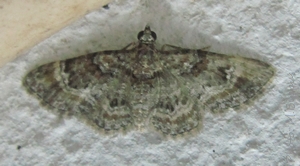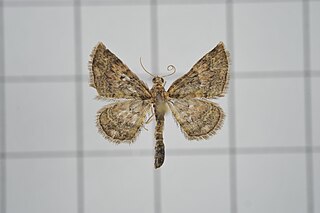
Hawaii is an island state in the Western United States, about 2,000 miles (3,200 km) from the U.S. mainland in the Pacific Ocean. It is the only U.S. state outside North America, the only one which is an archipelago, and the only one in the tropics.
Hawaiian is a Polynesian language of the Austronesian language family that takes its name from Hawaiʻi, the largest island in the tropical North Pacific archipelago where it developed. Hawaiian, along with English, is an official language of the US state of Hawaii. King Kamehameha III established the first Hawaiian-language constitution in 1839 and 1840.

Hawaii is the largest island in the United States, located in the state of Hawaii. It is the southeasternmost of the Hawaiian Islands, a chain of volcanic islands in the North Pacific Ocean. With an area of 4,028 square miles (10,430 km2), it has 63% of the Hawaiian archipelago's combined landmass. However, it has only 13% of the archipelago's population. The island of Hawaiʻi is the third largest island in Polynesia, behind the north and south islands of New Zealand.

Pearl Harbor is an American lagoon harbor on the island of Oahu, Hawaii, west of Honolulu. It was often visited by the Naval fleet of the United States, before it was acquired from the Hawaiian Kingdom by the U.S. with the signing of the Reciprocity Treaty of 1875. Much of the harbor and surrounding lands are now a United States Navy deep-water naval base. It is also the headquarters of the United States Pacific Fleet. The U.S. government first obtained exclusive use of the inlet and the right to maintain a repair and coaling station for ships here in 1887. The surprise attack by the Imperial Japanese Navy on December 7, 1941, led the United States to declare war on the Empire of Japan, making the attack on Pearl Harbor the immediate cause of the United States' entry into World War II.
Orthomecyna is a genus of moths of the family Crambidae. All species are endemic to Hawaii.

Gymnoscelis, the pugs, is a large genus of moths in the family Geometridae described by Paul Mabille in 1868.
Orthomecyna alloptila is a moth of the family Crambidae. It is endemic to the island of Hawaii.
Orthomecyna amphilyca is a moth of the family Crambidae. It is endemic to the Hawaiian island of Maui.
Orthomecyna picrodes is a moth of the family Crambidae. It is endemic to the island of Hawaii.
Orthomecyna phaeophanes is a moth of the family Crambidae. It is endemic to the Hawaiian islands of Kauai, Oahu, Molokai and Maui.
Orthomecyna metalycia is a moth of the family Crambidae. It is endemic to the island of Hawaii.
Orthomecyna epicausta is a moth of the family Crambidae. It is endemic to the island of Hawaii.
Orthomecyna crossias is a moth of the family Crambidae. It is endemic to the Hawaiian island of Oahu.
Orthomecyna chrysophanes is a moth of the family Crambidae. It is endemic to the Hawaiian island of Kauai.
Orthomecyna aphanopis is a moth of the family Crambidae. It is endemic to the Hawaiian island of Oahu.
Orthomecyna mesochasma is a moth of the family Crambidae. It is endemic to the Hawaiian island of Kauai.

Gymnoscelis albicaudata is a moth in the family Geometridae. It is found in the north-eastern Himalayas and on Peninsular Malaysia, Java, Bali, Borneo, the Philippines, Taiwan and Japan. The habitat consists of upper montane forests.
Natatolana albicaudata is a species of crustacean in the family Cirolanidae, and was first described by Thomas Roscoe Rede Stebbing in 1900 as Cirolana albicaudata, based on specimens collected in Blanche Bay, New Britain, Papua New Guinea.
Pasipha albicaudata is a species of land planarian belonging to the subfamily Geoplaninae. It is found within Brazil.
This page is based on this
Wikipedia article Text is available under the
CC BY-SA 4.0 license; additional terms may apply.
Images, videos and audio are available under their respective licenses.




